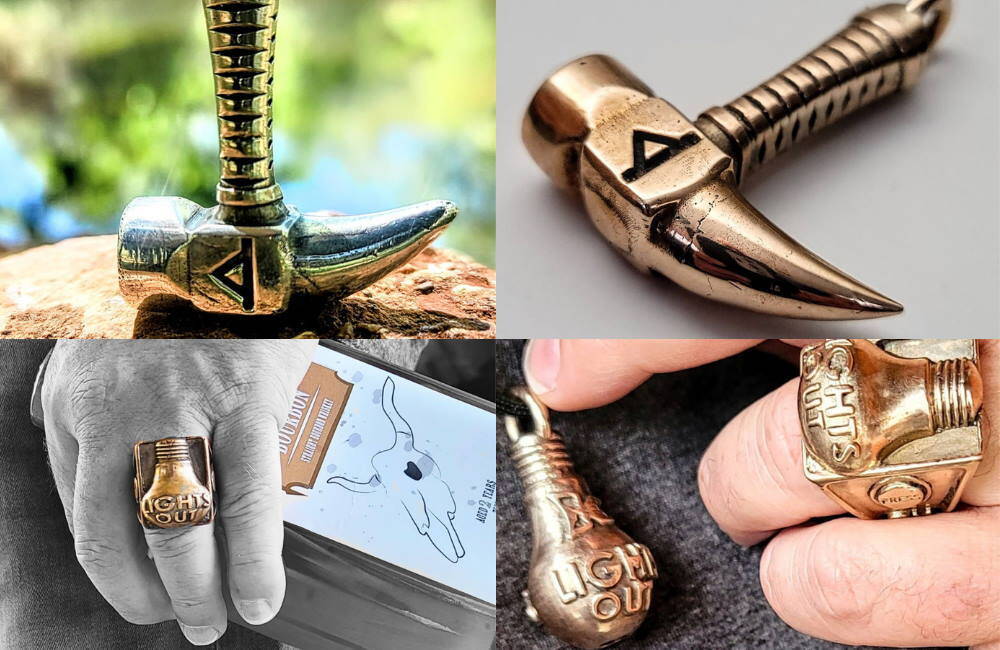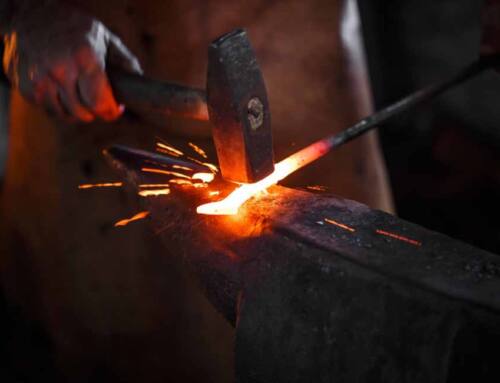Through the ages, people have adorned themselves with beautiful, intricate custom jewelry. For many people, jewelry is charged with meaning, going far beyond just trying to match your earrings to your outfit. At its best, modern custom jewelry evokes and symbolizes tradition, culture and heritage.
The line of jewelry from Louis Krudo reflects that concept. Designed with the idea of giving “rebirth, reinvention and new configurations” to long standing traditions, the line of jewelry also honors the retro futuristic fashions inspired by visionary writers such as Jules Verne and H.G. Wells.
For a designer like Krudo who has specialized for years in designing unique knives that blend form and function, the jewelry line offers a new way of expressing his approach to art and design.
The Earliest Jewelry
From the very start, jewelry expressed far more than a sophisticated fashion sense. Scientists have uncovered the earliest forms of jewelry in civilizations that flourished, from 3,000 to 400 BC, on the shores of the Mediterranean, as well as in what is now modern Iran, according to the Gem Society.
These simple stone amulets and seals carried great spiritual meaning. In some cases, people included them in offerings to the gods and also used them as ornaments on statues. Mummies found in the Royal Tombs wore headdresses, necklaces, earrings, rings, crowns, and pins. You can still see examples at the Metropolitan Museum of Art in New York City today.
Some prehistoric people may have worn shells, stones and bones as protection or as a sign of status among the tribe, according to the V&A Museum in London.
The Egyptians took jewelry to another level. Both men and women wore the scarab and a variety of talisman and symbols. Perhaps the most memorable is the ankh, which symbolized life.
Europeans and Jewelry
In Europe in the Middle Ages, only the nobility wore jewelry. This later expanded to wealthy land owners and some members of the clergy, but few people not in the ruling class wore jewelry. Much of the jewelry from this time included imagery associated with Christianity, including crosses and the use of pearls to symbolize purity.
The beginning of modern jewelry began during the Renaissance, especially in France and later England. Henry VIII, for example, had more than 200 rings and 300 brooches. King Louis XIV imported diamonds from India for use by his royal court.
Warriors also used jewels to adorn their sword handles. Others wore totemic symbols around their neck to give them strength and inspiration when needed.
By the 18th and 19th centuries, more “commoners” began wearing jewelry. This evolved into a way for both acknowledging the traditions of the past, by re-imagining ancient jewelry designs, as well as represent a person’s individuality.
Louis Krudo Custom Jewelry
In designing his own line of custom jewelry, Louis Krudo took inspiration from the past to create something new. For example, the Spike War Hammer evokes a 15th century short-handled battle spike used by warriors to attack those cloaked in armor. Krudo designed the piece for those who strive to attain difficult goals, keeping their talents hidden but ready to use when the right time presents itself.
The retro futuristic designs of the Lights Out line of jewelry pay homage to a Victorian Age when invention and innovation were hallmarks of the emerging Industrial Era. The popularity of this time period is reflected in the anachronistic charms of the steampunk movement in film, literature, music and art. Lights Out captures that spirit with a ring and pendant designed to evoke the look and feel of the old-style light switches.
Custom jewelry has long been a part of human culture for both men and women. Krudo’s contribution to jewelry gives fans of his design work a chance to wear something that allows them to honor the past while expressing their personality in the present.







Leave A Comment